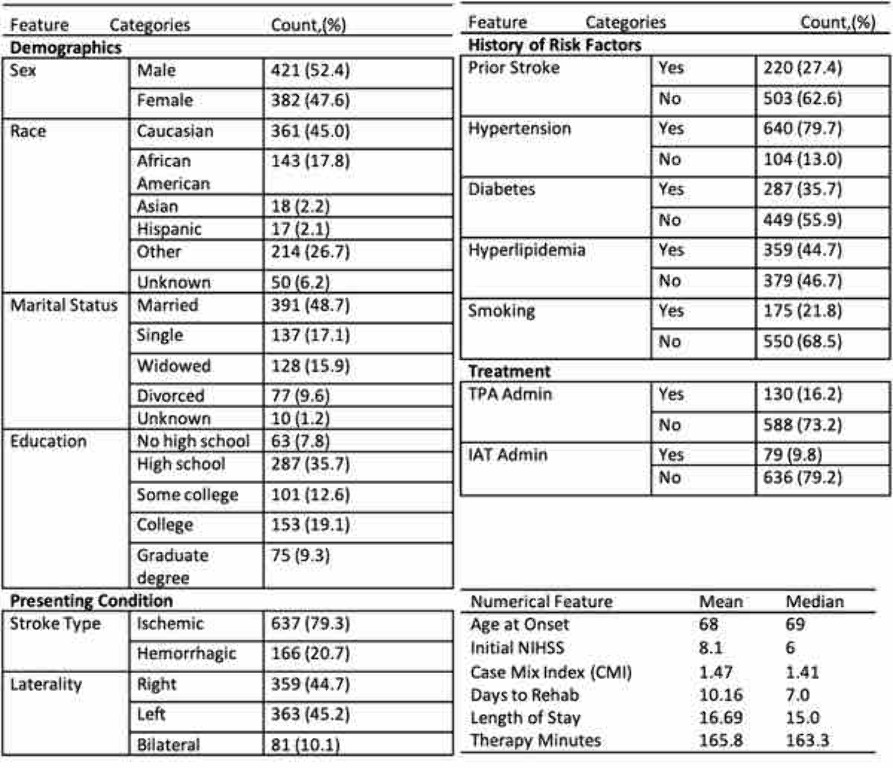
Presenter of 1 Presentation
NOVEL MACHINE-LEARNING ANALYSIS TO PREDICT OUTCOMES DURING INPATIENT REHABILITATION
Abstract
Background and Aims
We used novel machine learning (ML) techniques to predict change on the Functional Independence Measure (FIM) and each of its subcategories from inpatient rehab admission to discharge.
Methods
We propose a novel ML model, Zero-inflated Random Forest (ZiRF), to predict changes in FIM scores for each FIM subcategory from admission to discharge. We compared the proposed model with statistical learning and deep learning (DL) algorithms. Compared with statistical methods, ZiRF captures complex non-linear, interactive effects among predictors, mitigates the zero-inflation problem, and provides interpretable results compared with black-box DL methods. Mean absolute error (MAE) was used to estimate the prediction error across the 18 FIM score subcategories. The MAE per subject measures the prediction accuracy (lower MAE shows superior prediction accuracy).
Results
Fig 1 shows the demographics and clinical features of the study population of over 800 patients. ZiRF not only demonstrates superior predictive accuracy (MAE: 15.148) compared to linear regression (16.210), XGBoost (16.377), and random forest (21.753) but also generates interpretable inferences by identifying influential variables. The effect of each variable is represented by its Lasso coefficient obtained by fitting a cross-valued Lasso regression on each FIM score category. Among the top five predictors, age (OR = -1.7), Case Mixing Index (CMI) (OR = 1.5), length of stay in rehabilitation (OR = 1.2), duration of therapy (OR = 1.1), and Initial NIHSS score (OR = 0.75) are the most influential on functional outcome.

Conclusions
We present a novel model using ML to predict functional improvement for stroke patients receiving inpatient rehabilitation.
